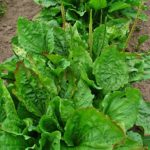
Eyebright: at risk.
This paper was a result of my work in HRB 622. But I think it reinforces and demonstrates the learning I acquired in HRB605. I feel that this paper indicates one method of how to apply traditional knowledge and evidence based data by assessing a variety of plant classification systems, including phytochemistry, botanical, cultural and bioregional, to improve human health. The comparison of constituents found in eyebright and plantain provides a convincing case for how phytochemistry and evidence based data can inform and build on the traditional body of knowledge that comprises western herbalism.
Eyebright and the Ethics of Wildcrafting.

The Noble Plantain
Wildcrafting is an important component of traditional herbal medicine. Many herbalists would argue that wildcrafting and encountering species in their native habitats is a necessary component in developing a competent and meaningful relationship with with those plants. There is also an argument that as a result of complex mechanisms such as hormesis cultivated plant specimens have the potential of containing a subtly different, and often weaker, constituent profile. Other herbalists will argue that these differences between wild and cultivated plants are negligible in a therapeutic context and the solution to over-harvesting of wild therapeutics is to use only cultivated varieties.